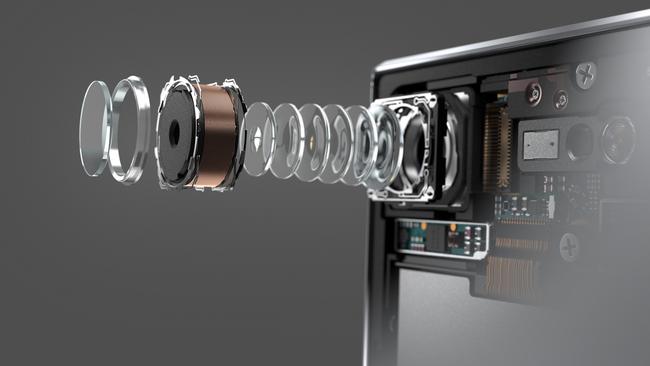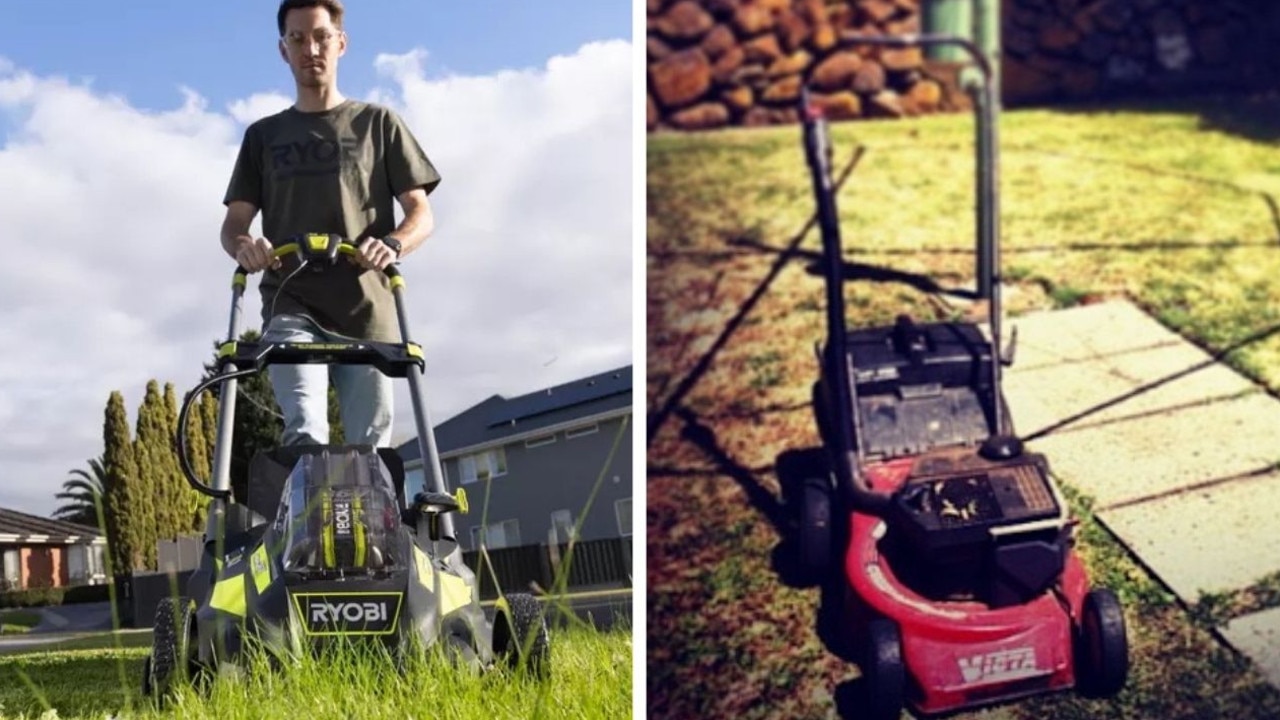Sony’s Xperia XZ Premium: Camera tricks just the start
Sony’s Xperia XZ Premium blows away both iPhone 7 Plus and Samsung Galaxy S8.
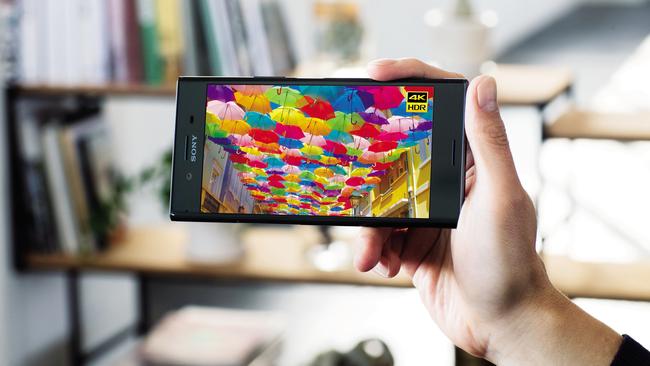
Sony Xperia XZ Premium is a classy smartphone with two amazing camera tricks. Whether they matter to you will affect how much you want this phone. But the mistake is to judge this phone solely by these two clever features and not see other stunning features. That starts with its display.
At 3840 x 2160 pixels or 807 pixels per inch, it blows away both iPhone 7 Plus (1080 x 1920 pixels, 401 ppi) and Samsung Galaxy S8 (1440 x 2960, 570 ppi). The phone shoots 4K video, which looks stunning on the 4K display. Sony says the display is capable of displaying 4K high dynamic range (HDR) content. The problem is whether a small 5.46-inch phone display can really do justice to all this quality. Probably not. Still, it’s impressive.
The two camera tricks centre around something Sony does better than other phone makes: making image sensors. It’s added a layer of DRAM memory in the sensor that can temporarily store video and stills at an incredible rate, at 25 gigabits per second.
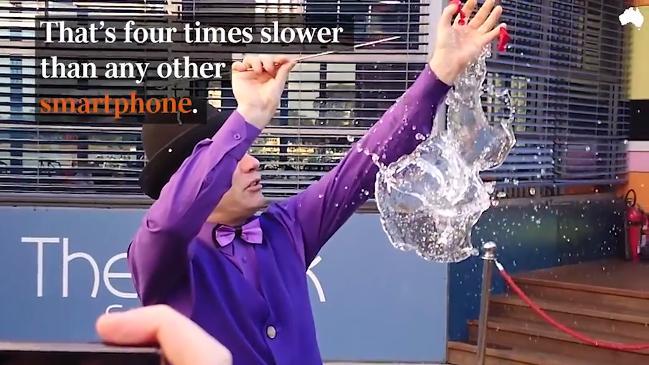
It means you can store amazingly high quality video at almost 1000 frames per second in short bursts and then pump it out at the normal 5 gigabit per second rate to the camera phone’s application processor. It’s short bursts because you are limited by the DRAM storage capacity.
It’s a great idea. I’d expect to see memory stacked image sensors soon on point-and-shoot and higher end cameras, markets that desperately need a boost through innovation.
The first trick is the XZ Premium’s ability to record incredibly slow motion video. You select super slow motion mode, then hit normal recording. When an event you want to slow down happens, you push the super slow motion button again, and the camera takes 960 frames per second video for 0.182 seconds. That’s 32 times slower than normal.
As I said, the camera doesn’t keep recording at 960 fps because the DRAM is finite. Sony argues anyway that sitting through minutes of super slow mo can be very boring. Watching that 0.182 second burst played over 6 seconds is enough to show off a fantastic moment.
At Luna Park Sydney, where Sony launched the phone, it didn’t take me long to capture the pivotal moment of a balloon filled with water bursting, and patrons rushing past on rides at ferocious rates. Their facial expressions were sharp, and something to behold. When you’re capture fast action, the tricky bit is to spot the right moment to press that button. It’s harder than you think.
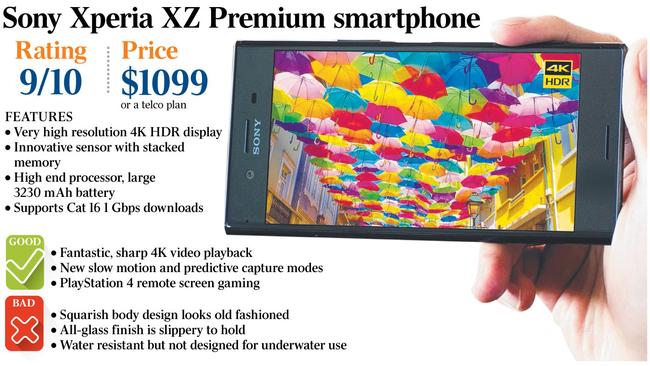
Where would you use this? When your friends or children play football, you can slow down the action of them kicking or catching a ball, or somersaulting in athletics, diving into a pool, or thundering down a slide at the local park.
I wouldn’t use it all the time, but there would be occasions where it is magic.
The second trick also makes use of the DRAM and is called predictive capture. By continually taking and caching stills in this memory, Sony can save full-sized photo images taken just before you press the shutter button. This compensates for the reaction time when you’re trying to catch some sporting action. It’s something I would love on my DSLR.
Predictive capture mode works when motion is in the frame. You select this mode, and press the camera phone button in two steps. When you press it initially, a little blue circle appears, telling you that the camera is constantly recording still images to the stacked sensor memory.
When you press the button further in, two of those images are saved, and the camera takes another two. You are then presented with four images, two slightly before the button press, and two after. You can opt to keep one, or all four. The idea is you get the best action shot.
So you shouldn’t miss the ball going through a basketball ring, or the instant a rare bird flies overhead, or the moment a juggler’s knife flies through the air.
Sony has gone down the path of a camera with fewer but larger pixels: a 19 mp back snapper with 19 per cent larger pixels. There’s a high resolution 13 megapixel selfie camera too.
Sony for years has offered HiRes audio. Now it offers a better wireless listening experience through LDAC, the company’s high quality Bluetooth audio technology. At Sony’s claimed rate of 990 kbps, it’s a little less than CD quality. You’ll need to connect to LDAC wireless headsets and speakers. Sony keeps telling us that we are missing out listening to 320 kbps tracks music tracks.
Sony is the home of PlayStation and there are PS4 capabilities when you pair the XZ Premium with a PS4 controller. It’s a little convoluted to set up but you can mount the XZ Premium in a cradle attached to the controller and use it as a remote screen for playing games.
Sony has offered waterproofing in its premium phones for half a decade. The XZ Premium is rated IP65/68 which means it can last a low-pressure water jet spray for 3 minutes, and the effects of continued immersion in water depths greater than 1 metre. It’s also dustproof.
But Sony’s online support page says you shouldn’t use the device under water. That’s a step back from earlier days when Sony talked about underwater video and photos.
While I love 4K screens, the downside is they churn up battery juice. I did our normal battery test of running 1080p video at 50 per cent brightness. It played for 10 hours 3 minutes which is excellent.
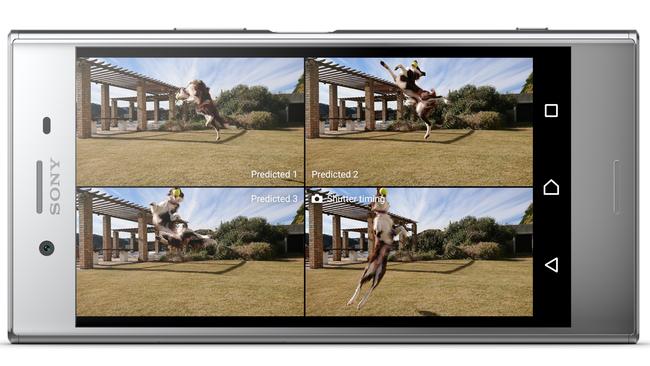
Note that when you play big 4K files it can impact battery life. I did the same test with a 4K movie playing and battery time was 5 hours, 8 minutes. The XZ Premium does support Quick Charge 3.0 fast charging technology so you can get going again quickly.
The phone has a high end Qualcomm Snapdragon 835 processor. On AnTuTu’s phone benchmark it returns 176126. Only iPhone 7 Plus performed better, based on AnTuTus most recent table rankings in April. The phone supports 1 Gbps downloads which is good news for high resolution LTE streaming. At Mobile World Congress this year Netflix said it was developing a compression engine so that 4K HDR Netflix over LTE didn’t chew through data. But hold fire until the codec and Cat 16 or its equivalent is available for your phone.
Sony says the XZ Premium uses machine learning to optimise battery temperature and pressure so you get up to double the battery life. I haven’t had time to observe this over any decent period.
The let down is the body design. While the glossy Gorilla Glass 5 finish looks spiffy, it attracts fingerprints and lacks the grippy feel of a phone with a textured back. It feels hard in the hands, and a tad thicker and heavier — 7g more than iPhone 7 Plus and 40g more than the S8. The lack of curved edges gives the phone a squarish, old fashioned look, something Sony should revisit. On my black review unit, it’s hard to distinguish the buttons on the sides without a decent glance.
The phone runs the latest Android 7.1 Nougat.
In summary, the XZ Premium is an excellent phone with high end features and an amazing camera memory stack feature that opens up new possibilities in photography generally. But the chassis design is not as sleek as the competition.
Sony Xperia XZ Premium
Price: $1099 or a telco plan
Rating: 9/10
